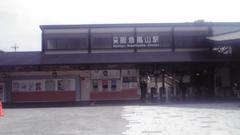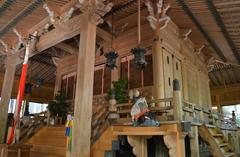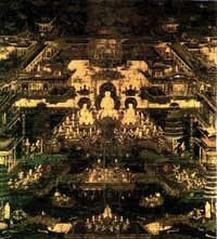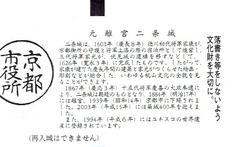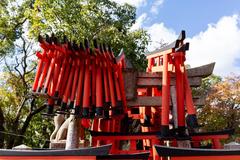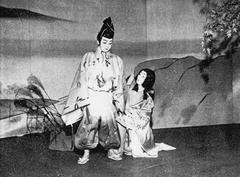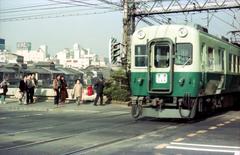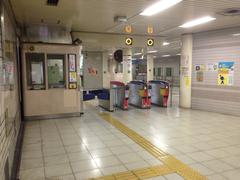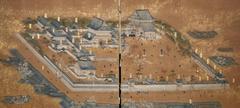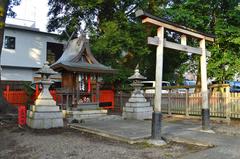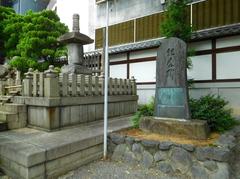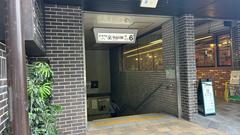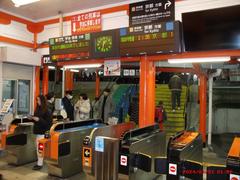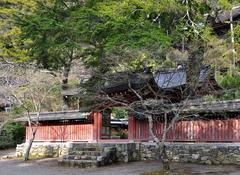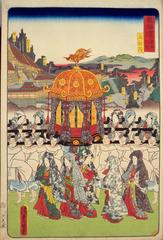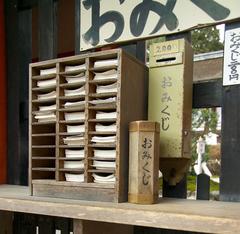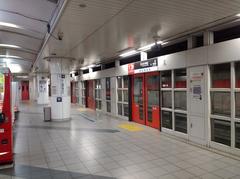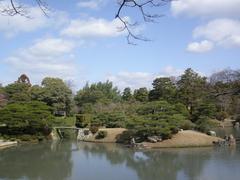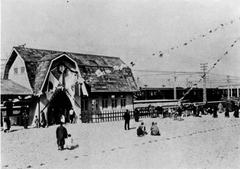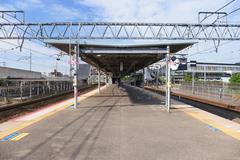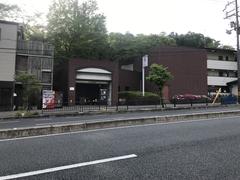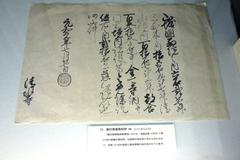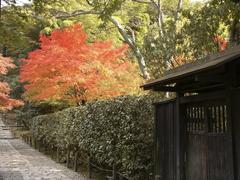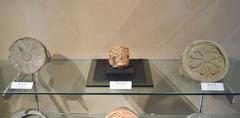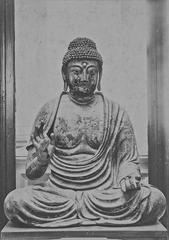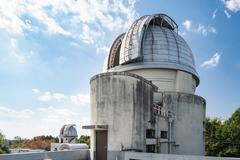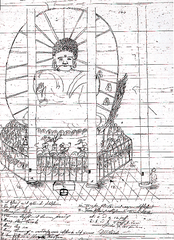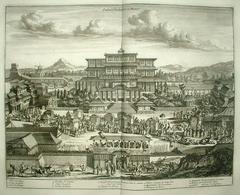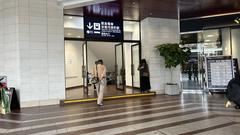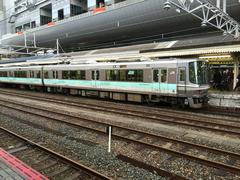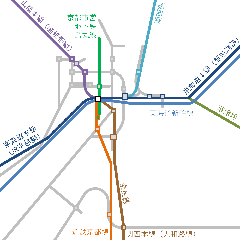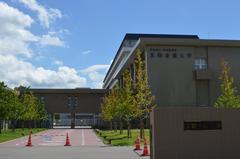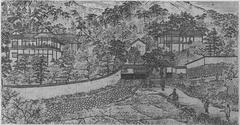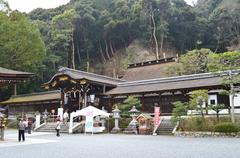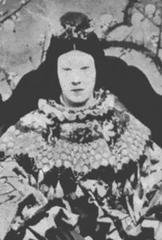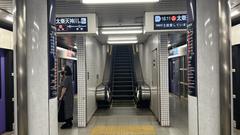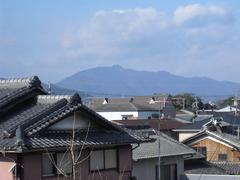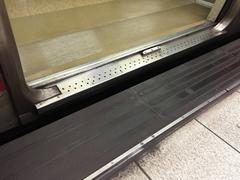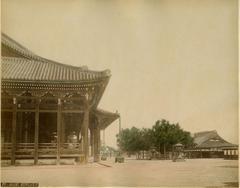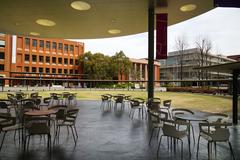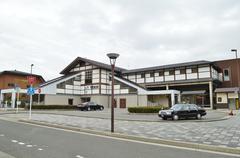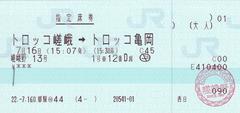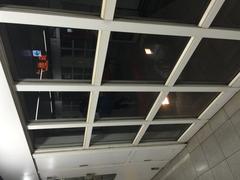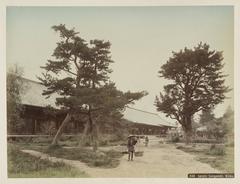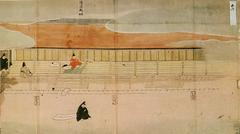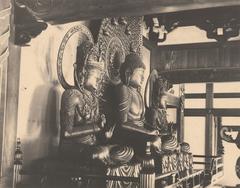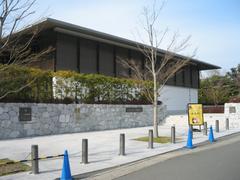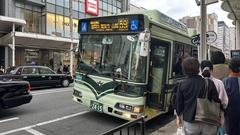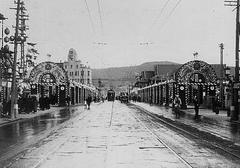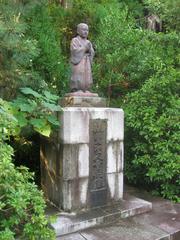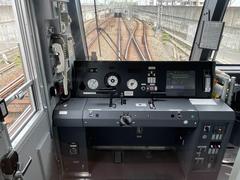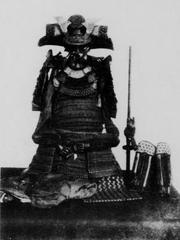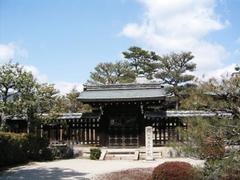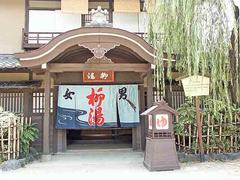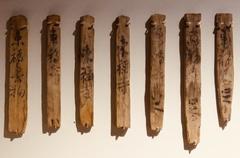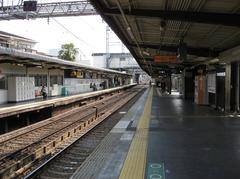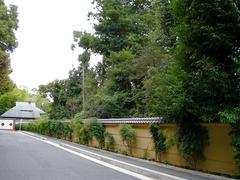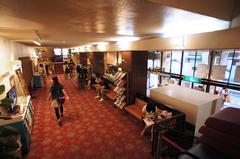
Nishi-Kyogoku Station Kyoto: Visiting Hours, Tickets, and Travel Guide
Date: 04/07/2025
Introduction
Nishi-Kyōgoku Station stands as a pivotal gateway to western Kyoto, seamlessly blending the city’s profound historical roots with its vibrant contemporary urban life. Situated on the site of Heian-kyō’s ancient western boundary, the station serves not only as a transport hub but as a bridge to the authentic neighborhoods and dynamic sports venues that characterize this part of Kyoto. Since its opening in 1928 on the Hankyu Kyoto Line, Nishi-Kyōgoku Station has played a central role in connecting Kyoto’s residents and visitors to both the city center and the broader Kansai region, while fostering community engagement and sustainable tourism.
This comprehensive guide details Nishi-Kyōgoku Station’s history, facilities, visiting hours, ticketing options, accessibility features, nearby attractions, and practical travel tips. For the latest schedules and updates, always consult official sources like the Hankyu Railway website and city tourism portals (Wikipedia: Nishi-Kyōgoku Station).
1. Historical and Urban Context
Ancient and Imperial Kyoto: The Western Boundary
The Nishi-Kyōgoku area marks the western fringe of Heian-kyō, the imperial capital established in 794 CE. The station’s location corresponds with the historical avenue, Nishi-kyōgoku-ōji, delineating the city’s ancient boundary and separating the urban core from temple-dotted rural outskirts (Wikipedia: Heian-kyō).
Modernization and Rail Development
Kyoto’s transformation during the Meiji Restoration brought new infrastructure and expanded rail networks, connecting the city to the wider Kansai region. The Hankyu Kyoto Line, developed in the early 20th century, was instrumental in suburban growth and made Nishi-Kyōgoku accessible for both residents and visitors (Kyoto Prefectural Education Center).
The Station’s Emergence and Community Role
Established in 1928, Nishi-Kyōgoku Station quickly became vital due to its proximity to Nishi-Kyōgoku Athletic Park—a major sports and event complex. Its integration into the daily life of the community, as well as its accessibility to major transport corridors, has only grown over time (Wikidata: Nishi-Kyōgoku Station).
Urban Expansion and Social Impact
Following WWII, the station supported rapid urban growth, improved accessibility, and fostered a local identity centered around sports, education, and community events. Today, it remains an anchor for neighborhood activity and a model for sustainable urban planning (Kyoto, Wikipedia).
2. Station Facilities and Accessibility
Layout and Architecture
The ground-level station features two side platforms serving two tracks, connected by an overhead footbridge with elevators and stairs. Design prioritizes efficient passenger flow and barrier-free movement, with clear signage and accessible infrastructure.
Ticketing and Fare Options
- Tickets: Purchase at multilingual vending machines or staffed counters. IC cards (ICOCA, PiTaPa, Suica, PASMO) are accepted and easy to recharge.
- Fares: Range from 210 to 400 yen depending on your destination.
- No special admission ticket is needed—pay only for train travel.
Accessibility Features
- Elevators and ramps provide barrier-free access.
- Tactile paving and wide ticket gates support travelers with disabilities.
- Accessible restrooms with baby-changing facilities are available.
- Station staff can assist those requiring extra help.
Amenities
- Coin lockers for luggage storage.
- Clean restrooms and covered waiting benches.
- Vending machines with drinks and snacks.
- Nearby convenience stores and eateries just outside the station.
Connectivity
- Hankyu Kyoto Main Line: Direct trains to Kyoto-Kawaramachi (approx. 10 min) and Osaka-Umeda (approx. 40 min).
- Bus and taxi: City bus stops and taxi ranks are at the station entrance.
- Bicycle parking and nearby rental options encourage eco-friendly exploration.
3. Visiting Hours and Travel Information
- Operating Hours: Daily from approximately 5:30 AM to midnight (check for changes during holidays or events).
- Ticket Purchase: At vending machines, counters, or via IC cards.
- Accessibility: Fully barrier-free, with elevators, ramps, and clear signage in Japanese and English.
4. Attractions and Activities Near Nishi-Kyōgoku Station
Nishi-Kyōgoku Athletic Park
A five-minute walk from the station, this sprawling complex includes:
- Takebishi Stadium Kyoto: Home to Kyoto Sanga F.C., hosting football matches and athletic events.
- Kyoto City Gymnasium: Venue for local and national sports.
- Seasonal festivals: Cherry blossom viewing in spring and sports festivals throughout the year.
Local Neighborhoods
Wander quiet residential streets for an authentic Kyoto experience, enjoying local eateries, markets, and artisan shops.
Cultural Exploration
- Saiin and Omiya districts: Accessible shopping and dining areas.
- Arashiyama: Famous for bamboo groves and historic temples, a short train ride away.
- Nijō Castle: Reachable via nearby transit connections.
Event Days
Expect increased crowds and special train schedules during major sports matches and festivals. Arrive early and plan ahead.
5. Sustainable and Responsible Tourism
Visiting Nishi-Kyōgoku supports community-based tourism, easing pressure on central Kyoto. Eco-friendly options like cycling and walking are encouraged, and local businesses benefit from visitors patronizing small eateries and shops (DefCitizen). Visitors are urged to follow local waste separation rules and participate in responsible travel practices.
6. Practical Visitor Tips
- Use IC cards for seamless travel across trains and buses.
- Avoid peak periods (evenings, weekends, event days) for a quieter experience.
- Coin lockers allow hands-free sightseeing.
- Explore both sports venues and local culture for a full Kyoto experience.
- Check event calendars ahead of time to plan around major matches or festivals.
7. Frequently Asked Questions (FAQ)
Q: What are Nishi-Kyōgoku Station’s operating hours?
A: Approximately 5:30 AM to midnight daily.
Q: How do I purchase tickets?
A: Multilingual vending machines, fare adjustment machines, and IC cards are accepted.
Q: Is the station accessible for wheelchair users?
A: Yes, elevators, ramps, wide gates, and accessible restrooms are provided.
Q: Are there lockers for luggage?
A: Yes, coin-operated lockers are available inside the station.
Q: How do I reach Nishi-Kyōgoku Athletic Park?
A: It’s a five-minute walk from the station’s main exit.
Q: Does the station have free Wi-Fi?
A: No, but mobile coverage is strong and tourist information is available online.
8. Visuals and Interactive Resources
- Include images of the station’s entrance, platforms, and Nishi-Kyōgoku Athletic Park during events.
- Alt tags: “Nishi-Kyōgoku Station entrance,” “Map of Hankyu Kyoto Line,” “Nishi-Kyōgoku Athletic Park football match.”
- Interactive maps and virtual tours on the Kyoto City tourism website.
9. Summary and Final Advice
Nishi-Kyōgoku Station embodies the harmonious intersection of Kyoto’s history and modern urban life. As a critical link between Kyoto and Osaka, and as a center for sports, culture, and local community, it offers a rewarding urban experience for visitors seeking authenticity and variety.
To make the most of your visit:
- Use IC cards for convenience.
- Time your trip to avoid crowding.
- Support local businesses and sustainable tourism.
- Stay updated with the Hankyu Railway website and the Kyoto Tourism Official Guide.
Nishi-Kyōgoku Station is not just a transit point—it’s your entry to a vibrant, evolving Kyoto that honors its heritage while welcoming the future.
Sources
- Nishi-Kyōgoku Station, Wikipedia
- Heian-kyō, Wikipedia
- Kyoto Prefectural Education Center
- Kyoto, Wikipedia
- Urban Innovation in Kyoto: Novelty and Cultural Heritage Making, IIAS Asia
- Kyoto Tourism Official Guide
- Nakasendo Way: Kyoto Development Issues
- DefCitizen: The Positive Impact of Tourism on Kyoto’s Economy and Society
- TravelPander: What Took Place in Kyoto, Japan?













